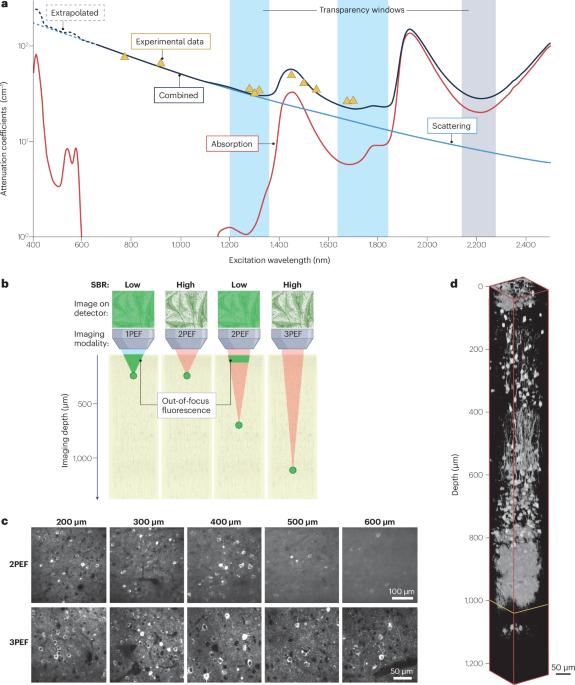三光子显微镜:一种新兴的深部活体脑成像技术
IF 26.7
1区 医学
Q1 NEUROSCIENCES
引用次数: 0
摘要
了解脑功能和病理需要观察完整神经回路内的细胞动力学。尽管双光子显微镜彻底改变了哺乳动物的活体脑成像,但其对上皮层的限制限制了对许多重要脑区域的访问。三光子显微镜克服了这一限制,实现了对高阶脑功能至关重要的深部皮层和皮层下结构的微创高分辨率可视化。这项新兴技术为研究神经科学的基本方面开辟了新的途径,从电路动力学到疾病机制。在这里,我们研究了三光子显微镜如何开始改变我们研究神经回路、神经胶质生物学、肿瘤和神经免疫相互作用的能力,这些相互作用在以前无法进入的大脑区域,主要是在小鼠中,但也在其他模式生物中。我们讨论了当前的技术挑战,最近的创新和未来的应用,这些有望使我们更好地了解活体大脑。本文章由计算机程序翻译,如有差异,请以英文原文为准。


Three-photon microscopy: an emerging technique for deep intravital brain imaging
Understanding brain function and pathology requires observation of cellular dynamics within intact neural circuits. Although two-photon microscopy revolutionized mammalian in vivo brain imaging, its limitation to upper cortical layers has restricted access to many important brain regions. Three-photon microscopy overcomes this constraint, enabling minimally invasive yet high-resolution visualization of the deep cortical and subcortical structures that are crucial for higher-order brain functions. This emerging technology opens new avenues for investigating fundamental aspects of neuroscience, from circuit dynamics to disease mechanisms. Here, we examine how three-photon microscopy has started to transform our ability to investigate neural circuits, glial biology, and oncological and neuroimmune interactions in previously inaccessible brain regions, primarily in the mouse, but also in other model organisms. We discuss current technical challenges, recent innovations and future applications that promise to bring us greater understanding of the living brain. Optical microscopy allows neural cells to be studied in the intact brain, but imaging deep neural tissue presents substantial challenges. Prevedel and colleagues outline the principles of three-photon microscopy, highlighting its advantages for deep tissue imaging and its applications in neuroscience.
求助全文
通过发布文献求助,成功后即可免费获取论文全文。
去求助
来源期刊

Nature Reviews Neuroscience
NEUROSCIENCES-
自引率
0.60%
发文量
104
期刊介绍:
Nature Reviews Neuroscience is a multidisciplinary journal that covers various fields within neuroscience, aiming to offer a comprehensive understanding of the structure and function of the central nervous system. Advances in molecular, developmental, and cognitive neuroscience, facilitated by powerful experimental techniques and theoretical approaches, have made enduring neurobiological questions more accessible. Nature Reviews Neuroscience serves as a reliable and accessible resource, addressing the breadth and depth of modern neuroscience. It acts as an authoritative and engaging reference for scientists interested in all aspects of neuroscience.
 求助内容:
求助内容: 应助结果提醒方式:
应助结果提醒方式:


